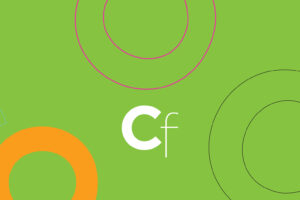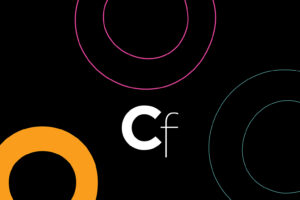State of the Industry 2025: how are creative agencies faring?


Image licensed via Adobe Stock
We take the temperature of the agency world as studio heads share their experiences of 2025 so far, good and bad.
Where has the time gone? We’re almost a third of the way through the year already. And if 2024 felt like navigating a choppy sea, then 2025 has presented its own unique set of currents.
In the face of a full-scale global trade war, the whispers of economic uncertainty are growing louder than ever, while the ever-present march of AI continues to reshape not only how we work but also the very nature of the briefs that land on our desks.
So, how is this affecting creative agencies on a day-to-day basis? Are clients reducing their spending? Is new business tougher to get? Or is the outlook actually not as grim as we imagine? We asked our community to share their experiences, thoughts, and feelings as honestly as possible. We’ve drawn together these insights in a special ‘State of the Industry’ report for 2025.
Read on as we delve into the key trends shaping the agency landscape right now and learn more about the challenges individual studios face, the solutions they’re deploying, and the enduring spirit that continues to drive impactful and meaningful work.
Under pressure
Charlie Bowden, creative director at KesselsKramer, speaks for many when he says: “Broadly, I’d say things feel uncertain. This is both my feeling and the sense I get speaking to friends across various creative fields.” The impact of this is seen in the tightening of client budgets.
“I’m reluctant to say they’re shrinking because I don’t have the whole picture,” he adds. “But across the board, clients are being more cautious with how they spend what money they have. And, often, they’re asking their budgets to be stretched further and further, something which is tough given recent inflationary pressures.”
Karl Doran, founder and creative director at Flow, tells a similar story. “The first quarter of this year has been the worst I’ve seen in nine years of running a studio,” he reveals. “We’ve pitched for nearly £800k worth of projects, and only won about £60k, with around £150k still pending.”
That doesn’t mean, though, he’s willing to slash his rates. “When we lose out on costs, I always think, ‘Okay, I guess we’re not the cheapest option’,” Karl reflects. “But nor should we be. Our work is always carefully crafted and high quality, which takes time and rightly costs more. The annoying thing is that in many of these cases, no budget has been shared up front, despite us always asking. If there had been more transparency earlier on, it would have saved us a lot of time putting proposals for jobs that we’re not going to win anyway.”
Disrespect and ghosting
Even agencies that are doing well on paper are worried. Take Ryan Stone, creative director of production agency Lambda Films. “This year we’ve seen our highest number of enquiries ever,” he says. “There’s definitely more appetite for creative work, specifically in the video and animation sector. However, 2025 continues to be plagued by the same issues that have emerged since the pandemic and economic turmoil.”
Ryan explains that in 2025, it’s hard to run a creative business for a number of reasons. “Indecision is rife,” he begins. “We now measure project award decisions in months rather than days or weeks. In some cases, we pitched for projects over eight months ago, and they’re still being considered. There is so little respect for creatives. We’ve always measured the results of our enquiries in terms of wins and losses. However, last year, we had to add a new category, ‘Ghosted’. Being ghosted remains the highest ‘result’ from all our pitching.
“Budgets have shrunk, but expectations have grown,” he continues. “Deliverables now number in the hundreds for socials and so forth, but the budgets have remained the same. Considering inflation, this is less money for much more work. Also, many of the world’s largest companies are moving to 90-day payment terms. So as an SMB, we often have to prop up projects and costs from our own pocket.”
Despite these difficulties, though, most agencies are staying positive. Nicki Field, joint MD at Jelly/TBM Group, offers a typical perspective. “As an industry, we’re being batted about by constantly changing economic and geopolitical events, making clients at the top of the spending pile risk-averse, both in taking creative risks and budgeting,” she notes. “However, there’s a lot more bite back in the industry in 2025. I think collectively there’s a joint feeling that if we don’t fight the blandification of 2024, it’s all just a race to the bottom.”
The AI equation: threat or opportunity?
Economic headwinds by themselves would be bad enough, of course, but right now, agencies also have the AI revolution to contend with. So how’s everyone feeling about that? In a word, conflicted. As Chris Joyce, founder of VelvetBadger, says: “AI continues to split the room: clients tend to either love it or hate it. We’re not seeing it replace design jobs just yet, but you can definitely sense the anxiety.”
At the same time, Eve Gaut, founder and director of Parrot PR and Marketing, points to a common concern. “The rise of AI means clients assume things will be done quicker as you’ll be using AI,” he points out. “But this is merely an assumption and not the case for our agency.” And creative director Oscar Park adds: “The weirdest challenge is the existential threat AI is creating around the reality of an image. This constant questioning of what is and isn’t real might be causing a sort of fatigue towards visual communication.”
Creative bravery
But agencies are by no means giving up the fight; in fact, it seems to be reinvigorating them. As Ashley Matthews, creative director at TMG, says: “We’re seeing AI come in and deliver ‘fine’ work at scale, and that’s a constant threat to be aware of. But we also see it as a chance to get inspired and back in love with doing the work. We’ve got to get on with it, get into it, and get in love with the making of it all.”
Gordon Reid, founder of Middle Boop Studio, agrees. “While there’s a lot of fear about AI and automation, the other side to the coin for me is that creative bravery stands out more,” he reasons. “Upskilling and evolving your offerings are more important than ever; hyper-niching will put you above the rest.”
James W., who drives impactful video-first advertising campaigns for global brands, describes his experience as “a bit of a rollercoaster” but sees some positive trends: “There’s a real appetite right now for storytelling and longer-form, narrative content,” he reports. “Clients seem more ready to invest in that space, maybe as a human counterbalance to the way AI is shaking things up?”
More mergers, staffing struggles
So what effect does all this have on the sector as a whole? DACRE founder Alex Dixon takes a bird’s eye view. “I’m seeing some larger brands move from small rosters of large agencies to large rosters full of more niche agencies,” he explains. “So I feel in the agency world, the big will continue to get bigger. There’ll be more mergers to keep up and retain larger billing clients, halving operating costs through lower headcounts and reduction in office space.”
At the same time, he predicts that a new batch of small indies will come through over the next five years. “The top ones, such as Uncommon and NCA, have sold and are now part of the big dogs. They will clean up a lot of the new biz. That means mid-sized agencies will really get squeezed. They can’t undercut the up-and-coming indies and can’t handle large retained global accounts with huge service offerings like the big dogs. So I feel the gap between big and small will only get bigger and bigger.”
At the same time, recruitment is also becoming an increasing challenge. “The knock-on effect of client budgets is that agencies have less room to hire and promote staff, and that’s hard for both employee and employer,” says Charlie. “2024 saw countless redundancies and hiring freezes. I get the sense this is changing in 2025, but perhaps not as quickly as many had hoped.”
Eve agrees. “Finding decent people to hire is tough,” she says. “Flexibility is no longer enough to encourage people to join the team, and rising costs mean the same person to employ is much more costly a year on. Yet, clients still want their existing rates. So either profit will slump, or you’ll work harder and longer for the same… meaning less balance for you and the team.”
Note of optimism
We don’t want to leave you with a sour taste in your mouth, though, so let’s end with some more positive thoughts. Jen Judd, co-founder of Animade, reflects on a difficult journey with signs of recovery.
“We turn 15 this year, and 2023 was by far the worst year we’ve ever experienced, forcing us to make our toughest decisions as founders in order to keep our studio going,” she recalls. “In 2024, we saw a gentle and welcome recovery, with work from long-standing relationships picking up again, especially with tech partners. This year has started positively, and we’re feeling optimistic thanks to long-standing relationships and internal recommendations within those companies.”
Many other agencies are expressing cautious optimism about the remainder of 2025. Chris Joyce observes: “Things have picked up since 2024. More job ads are popping up, and the general pulse feels more energetic. And while Trump’s tariffs are throwing some global uncertainty into the mix, we’ve found that the less time you spend doom-scrolling, and the more time you spend actually chatting to clients and creatives, the better the outlook feels.”
Cal Thomson from Dead Pixel Films is also upbeat. “Honestly, we’re stacked and fully booked for the next three months, which hasn’t happened in years,” he says. “This is likely due to our relentless marketing efforts and relationship building but could be a sign of market improvement.” And Daniel Poll, founder at Noramble, issees positive movement too. “We’re seeing a lift in enquiries from last year,” he reports. We’re also finding clients are more open to ideas and creativity, which hasn’t been the case since the pandemic.”
All of this is perhaps summed up best by Natasha Szczerb, managing director and co-founder of Badberries: “In a nutshell, I see creativity having to work harder in 2025, but that’s a good thing. It’ll push the industry towards fresh and original thinking to help businesses ride the wave of uncertainty and cut through the noise. Standing still is not an option.”




